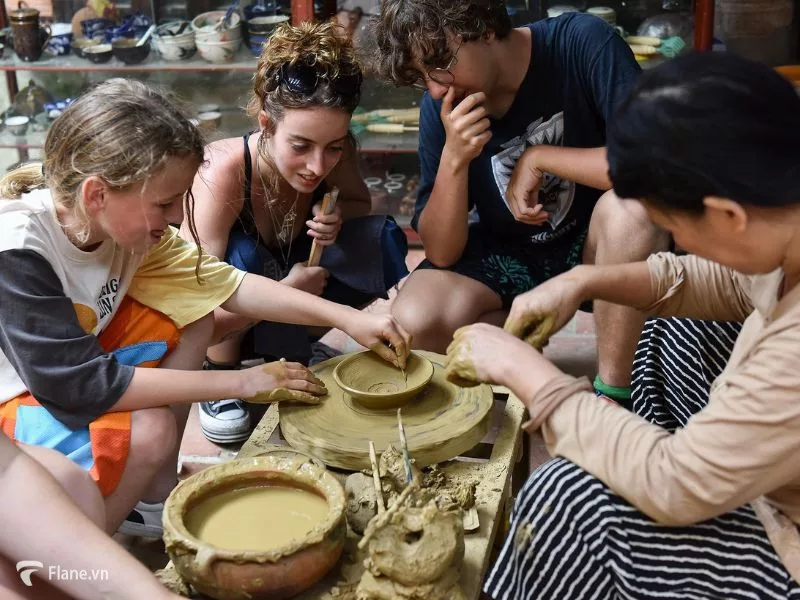Sustainable tourism is becoming a global trend, reflecting a shift in travelers’ awareness of their responsibilities toward the environment and communities. In this context, the European tourist market—a significant source of outbound travelers—presents considerable potential for Vietnam, particularly for agritourism and community-based tourism (CBT). With its rich natural resources, diverse culture, and distinctive agricultural heritage, Vietnam has a unique opportunity to attract European tourists seeking authentic and sustainable experiences. Drawing on insights from the Centre for the Promotion of Imports from Developing Countries (CBI), this article analyzes the demand of European tourists in Vietnam, their share of the market, and the potential for developing these two tourism types.

European Tourist Market in Vietnam: Share and Trends
Europe is the world’s largest outbound tourism market, with 707.4 million international travelers in 2023, accounting for 54% of global outbound tourism (according to CBI). Countries such as Germany, the United Kingdom, France, the Netherlands, and Italy lead the way, with a growing demand for sustainable tourism. In Vietnam, European tourists make up approximately 10-15% of total international arrivals, equivalent to 1.5-2 million visitors during peak years like 2019 (18 million international arrivals), as reported by the Vietnam National Administration of Tourism and CBI. France, the UK, Germany, and the Netherlands are the largest source markets.
Post-pandemic, European tourist arrivals have recovered more slowly than Asian markets but remain stable with strong long-term potential. CBI forecasts that Southeast Asian destinations like Vietnam remain attractive due to affordable costs and unique cultural offerings. European tourists typically stay longer (10-14 days) and spend more, particularly on experiential tourism such as agritourism and community-based tourism.
Demand of European Tourists: Sustainability and Authentic Experiences
CBI emphasizes that sustainability is a defining factor in European tourism, with the goal of achieving net-zero emissions by 2050. Tourists from Germany, the UK, and the Netherlands prioritize experiences that are environmentally and socially responsible, aligning with Vietnam’s strengths.
- Agritourism
Agritourism is increasingly popular among European tourists, especially those seeking connections with rural cultures. Activities such as rice harvesting, visiting coffee plantations in the Central Highlands, or making fish sauce in Phú Quốc attract visitors from France, Germany, and the Netherlands. CBI notes that British tourists (32% prefer rural areas) and Italians (42% favor local products) choose destinations close to nature. With 60% of Vietnam’s population living in rural areas, the country has significant potential to meet this demand. - Community-Based Tourism (CBT)
CBT, managed by local communities, delivers economic benefits and preserves culture, making it a major trend among European tourists. Germans (74% prioritize culture) and Britons (24.7% choose developing countries) enjoy staying at homestays, learning pottery in Bát Tràng, or participating in festivals in mountainous regions. This demand stems from a desire for authentic experiences and avoiding the negative impacts of mass tourism.
Potential for Developing Agritourism and Community-Based Tourism in Vietnam
Vietnam possesses ideal conditions to develop agritourism and community-based tourism to attract European tourists. Below is an analysis of the potential based on CBI’s insights:
- Rich and Diverse Resources
With 54 ethnic groups and distinctive rural areas, Vietnam offers unique tourism products. Agritourism leverages terraced rice fields in Hà Giang, silk production, vegetable farming in Hội An, or lotus and ornamental flower cultivation in Đồng Tháp. Community-based tourism thrives in rural villages with homestays and local cuisine, catering to the “slow travel” trend favored by European tourists. - Supporting Local Economies and Preserving Culture
Both tourism types deliver direct economic benefits to local communities, a key concern for European tourists. According to CBI, CBT creates jobs, increases income, and fosters community autonomy, while agritourism helps farmers diversify revenue streams. For example, a farmer in Đồng Tháp can combine lotus cultivation with tourism services, selling products and guiding visitors in making lotus tea. This not only improves livelihoods but also preserves traditional cultural and agricultural values, aligning with European tourists’ desire to “do good.” - Challenges and Opportunities in Sustainability
CBI highlights that to attract European tourists, Vietnamese tourism businesses must adopt sustainable practices, such as reducing waste, using renewable energy, and ensuring fair benefits for communities. This poses a challenge given the limited tourism infrastructure in Vietnam’s rural areas but also presents an opportunity to position Vietnam as a leading sustainable destination in Southeast Asia. Sustainability certifications (e.g., Fair Trade Tourism), as recommended by CBI, can enhance credibility in the European market.
Conclusion
The European tourist market, accounting for 10-15% of Vietnam’s international arrivals, is a vital driver for agritourism and community-based tourism. The demand for sustainable, authentic experiences from tourists in Germany, the UK, France, the Netherlands, and other countries aligns with Vietnam’s assets: from rice fields to culturally rich villages. To maximize this potential, Vietnam must invest in infrastructure, enhance service quality, and promote through online channels—the primary platform for European tourists.
The “Swiss Tourism for Sustainable Development in Vietnam” project (ST4SD, 2024-2027), funded by SECO, is contributing to these efforts. Implemented in Hà Giang, Đồng Tháp, and Quảng Nam, ST4SD collaborates with the Vietnam National Administration of Tourism to support sustainable policies, train a professional tourism workforce, and promote CBT and agritourism, positioning Vietnam as a prominent player on the global sustainable tourism map, particularly for European tourists.